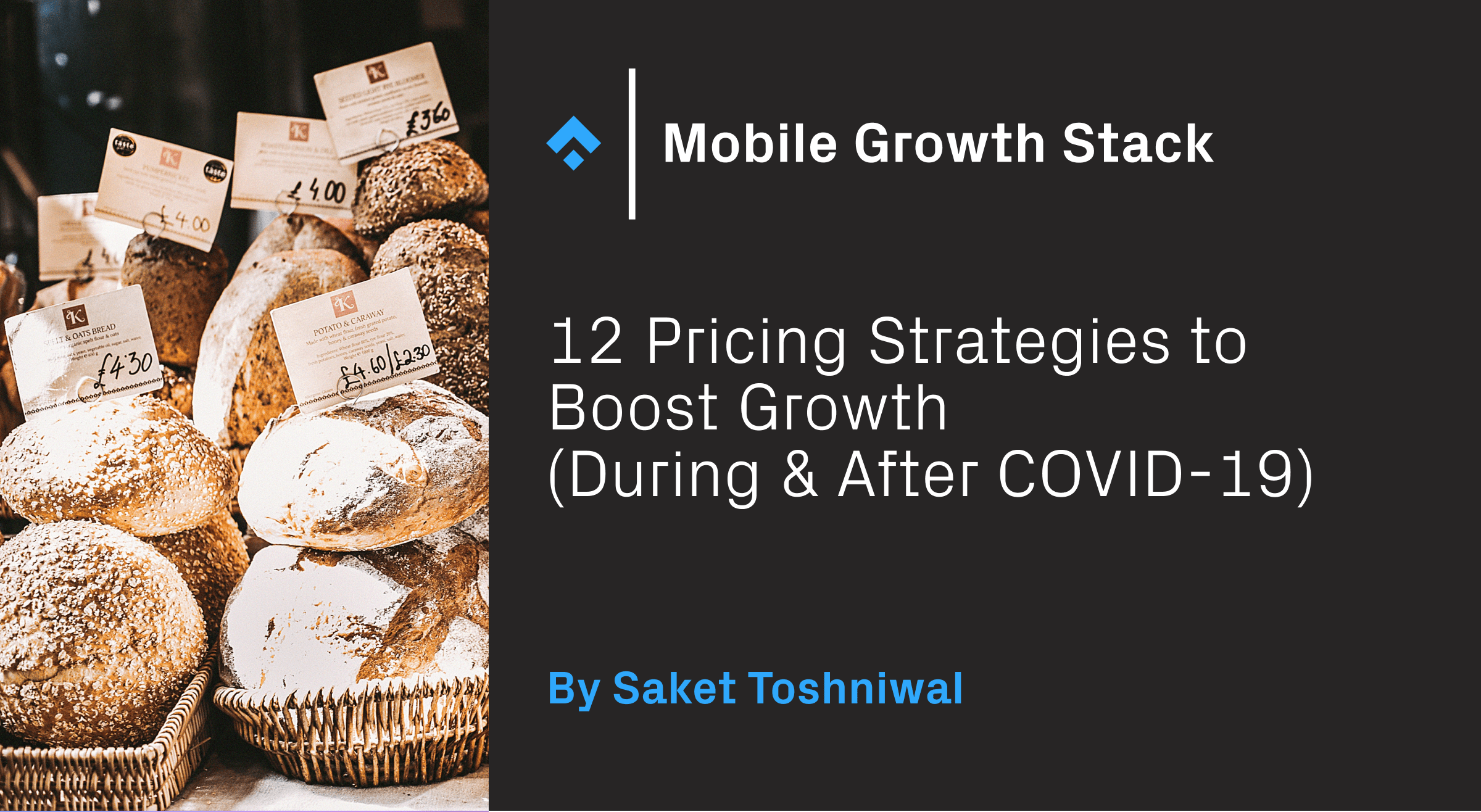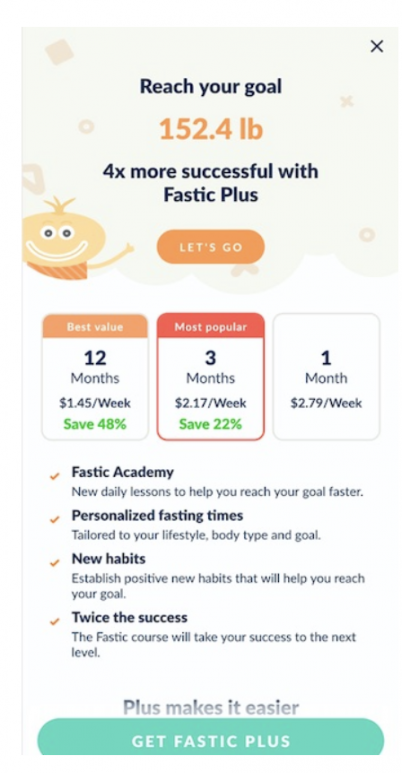
Editor’s Note: Saket Toshniwal is Head of Growth, Product Marketing, and CRM at LOVOO GmbH, a social entertainment app with millions of downloads. This marketing expert, who has consulted companies to grow revenue by implementing smart, data-driven strategies, joins us today for deep dive into today’s top pricing practices for mobile apps.
When it comes to app and game pricing, ‘strategy’ is everything. In a normal goods and service exchange relationship customers already know they will have to pay something but with digital products the prevalence of ‘freemium’ models or ads in lieu of payment makes charging for apps a more delicate and nuanced proposition.
As with all mobile growth strategies, psychology plays a big role. As growth marketers, we have to understand our customers and how to position pricing to appeal and make sense to our audience, while still taking into account your product and company goals (during and after the pandemic).
At the end of the day, the goal is simple: drive growth for your product. However, there are many roads to this destination. Some teams may opt for a strategy that increases revenue but decreases payer per share, while others do the exact opposite. Of course, some choose to focus on conversion rates and not necessarily overall revenue.
With no shortage of pricing methods, the question then becomes which one is right for your team and product. In this article, we are going to dive into twelve of the most effective price strategies that you could implement today for better results.
1. Subscription Price Reframing
Sometimes perspective is everything. Remind users of the weekly/daily equivalence of your price while still keeping the actual price in focus as shown in the examples below. The low cost of the equivalent price will anchor the viewer’s mind in the low-cost mindset, this is especially true for fitness or frequent usage apps.

In the above example of equivalent prices, you can also see that the prices are listed high to low, moving left to right. Statistically, the high to low price structure tends to always provide a statistically significant uplift in purchasing
2. Discounts
Discounts can be a powerful motivator when they are applied smartly. Consider this: Does it feel like a better deal to get 20% off or 10$ off?
You’re probably thinking it depends on the price of the item, which is exactly right. That’s why it’s important to apply the golden rule of discounts: Give percentage discounts when the price is under $100 and absolute discounts on prices over $100—of course, the number will vary slightly based on your currency.

3. The power of Nine
It almost seems too simple to be true, but prices that end in ‘9’ generally increase sales by 8%, and this is without changing any other digit in the pricing.

4. Price Anchoring
Price anchoring, much like subscription reframing, has to do with changing the viewer’s context. In this case, instead of contextualizing the price with an equivalency, you instead add a more expensive option in order to make the lower price seem more reasonable. This can work in another way if the medium and large prices are so close together that a viewer thinks they may as well opt for the slightly more expensive version.

5. Upgrading Freemium Users
Sometimes users can be afraid of the commitment of a subscription plan. In this case, you can ease freemium users into paying for a subscription by offering a single purchase offer like the example below. Audible offers three months for 99p, a totally nominal price whose intent is more about getting user buy-in than actually earning revenue. Some companies will actually offer a totally free version for users to test.

6. Dynamic Pricing Strategy
The only thing that is constant is change. This is why a flexible pricing strategy can be helpful. With ‘flexible pricing,’ prices fluctuate based on the market, customer demand, or customer propensity to pay. Companies use dynamic pricing by applying algorithms that consider competitor pricing, and demand among other factors.
In fact, during the pandemic, I have tested the difference in prices based on some of these factors, here are some examples I can suggest to start out with…
- By country, countries based on purchasing power to pay.
- By operating system: Do iOS users have a higher propensity to pay than Android?
- By device model, does the customer use iPhone 12 vs iPhone SE?
- Age-based segments
- Income-based pricing
- Gender-based pricing
- Usage/frequency-based pricing
7. Bundles
Bundled products often give consumers the feeling of getting a good deal, which is attractive to people during a pandemic. Bundles are essentially combinations of several products sold for a single price instead of charging separate prices for each of them. Bundles also encourage product sampling and exploration.

8. Installments
Offering smaller installation payments over time anchors the user to a lower price while also playing on the concept of affordability. You can also bring in a ‘zero’ option for your equated monthly installments (EMI) offering to encourage the buyer towards a big purchase by removing the friction caused by affordability concerns.

9. Decoy Pricing
Decoy pricing is a study by Dan Ariely that demonstrated that adding a ‘decoy’ pricing option can actually encourage users to opt for the ‘real’ pricing option. How does this work? Let’s say you want customers to choose [A]. Then you would add a slighting worse option, let’s call it [A-]. [A-] makes [A] seem like a more quality option by comparison and now customers are more likely to go for [A].
Apple is perhaps the most famous for using decoy pricing to ‘nudge’ their customers towards a purchase, but the practice is utilized across multiple industries.
In the above example you can see that Sports Illustrated offers three subscription options:
- 1-year all-access package
- 6-month all-access package
- 1-year digital access package
Anyone that looks at the options can see that the digital access package is redundant since it’s already offered with both of the ‘all-access’ options, but including it at the same price as the 1-year all-access package helps reinforce the value of the latter, thereby nudging customers to choose it. They should be thinking, ‘Hey, the All Access package includes both print and digital for the same price as just digital, sign me up!’
10. Cancelation Discount
This pricing strategy applies to customer retention by incentivizing current customers to stick with your product via discounts or membership pause options. This is a great option for re-engaging flighty users as it’s always easier and cheaper to retain a customer than to find a new one. These options tend to be very compelling and definitely worth employing.

11. Price Campaigns
With any pricing strategy, it’s important to put yourself in the shoes of your desired customer. What are their needs and also when do they have money to spend? One general assumption that can inform your price campaigns is that people receive money towards the end of the month. So the 25th through the 6th of the following month is generally the best time to campaign and win paying customers. This is especially true during a pandemic when people are more at home and spending from home.
12. Increase the runtime of subscription:
We talked about testing pricing strategies by country in the ‘dynamic pricing strategy’ section and here’s one specific tactic you can use: offer longer runtime packages for countries with a higher propensity to pay. (Germany, Switzerland, and Japan are a few countries with high pay propensity). Conversely, you can offer shorter runtime packages in countries where your conversion rate is lower and see if that improves your stats.
A dating app could, in higher pay propensity countries, be offered in three, six, and twelve-month subscription runs. While, in lower pay propensity countries, a runtime could be three, six, and twelve weeks.
Why Pricing Strategy is Worth the Time And Effort
When it comes to pricing strategy, the question isn’t whether you should employ one, but rather which strategy or combination of strategies is right for your app. The hard truth is that there is no replacement for testing and optimizing.
You can look to competitors as a place to start, but resist the urge to go on auto-pilot you must measure your results and test methods against each other to find what works. The most important piece of advice I can give is to talk to your customers, they are the tried-and-true market for your product and their feedback is invaluable when it comes to pricing.
I would caution against drastic discounts or sweeping long-term changes, take this journey step by step so you don’t alienate your current market. On the other hand, don’t be afraid to off different prices based on your customer personas or pricing tiers.
In the end, your product has so much to gain from smart, data-driven pricing strategies, that any time and budget investment is highly worth it. If you make pricing a priority you will likely see short and long-term impacts for the positive. I hope you found this article helpful and please feel free to share it with our team. Happy pricing!















